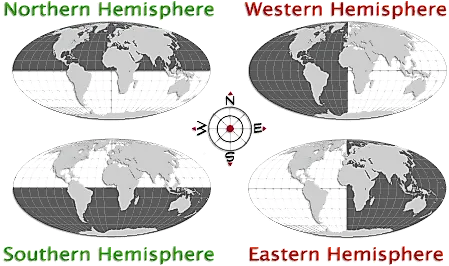About 90 of the earth s population lives in the northern hemisphere

About 90% of the Earth’s population lives in the northern hemisphere.

Did you know that about 90% of the Earth’s population resides in the northern hemisphere? This fascinating fact sheds light on the population distribution across our planet. While it may come as a surprise to some, a glance at the Earth’s geography and historical settlements can help us understand this phenomenon.
The northern hemisphere encompasses the area above the equator, which includes North America, Europe, Asia, and parts of Africa. The southern hemisphere, on the other hand, includes most of South America, Australia, Antarctica, and the southern portions of Africa. Despite offering vast and diverse landscapes, the northern hemisphere has become the preferred habitat for the majority of the world’s population.
Several factors contribute to the concentrated population in the northern hemisphere. One significant reason is the abundance of habitable land. The northern hemisphere boasts expansive and favorable regions for settlement, offering various climates, resources, and opportunities for agricultural development. These factors have historically attracted human settlements and favored population growth.

Moreover, the northern hemisphere houses several highly developed countries with advanced infrastructures and better living conditions. These nations often provide improved healthcare, education, and employment opportunities, which naturally attract individuals seeking a better quality of life. Consequently, population growth is more likely to occur in these regions compared to underdeveloped parts of the world.
Global trade and migration patterns also play a role in the population distribution. Many international trade routes are concentrated in the northern hemisphere due to historical trade networks, economic powerhouses, and favorable geographical positioning. These factors spur economic growth, creating opportunities and attracting migrants from different parts of the world. As a result, population density increases in these regions.
It is important to note that the population distribution is not solely determined by geography. Political, social, and economic factors also influence population patterns. However, the concentration of the Earth’s population in the northern hemisphere remains a significant and captivating phenomenon.
In conclusion, approximately 90% of the Earth’s population resides in the northern hemisphere. This fact highlights the favorable conditions, better opportunities, and development in this part of the world. Factors such as habitable land, advanced infrastructures, trade networks, and migration patterns contribute to the concentration of population in the northern hemisphere. Understanding the distribution of the Earth’s population adds another layer of knowledge to our understanding of global demographics and human settlements.
Source: Insider
Tags
Share
Related Posts
Quick Links
Legal Stuff

